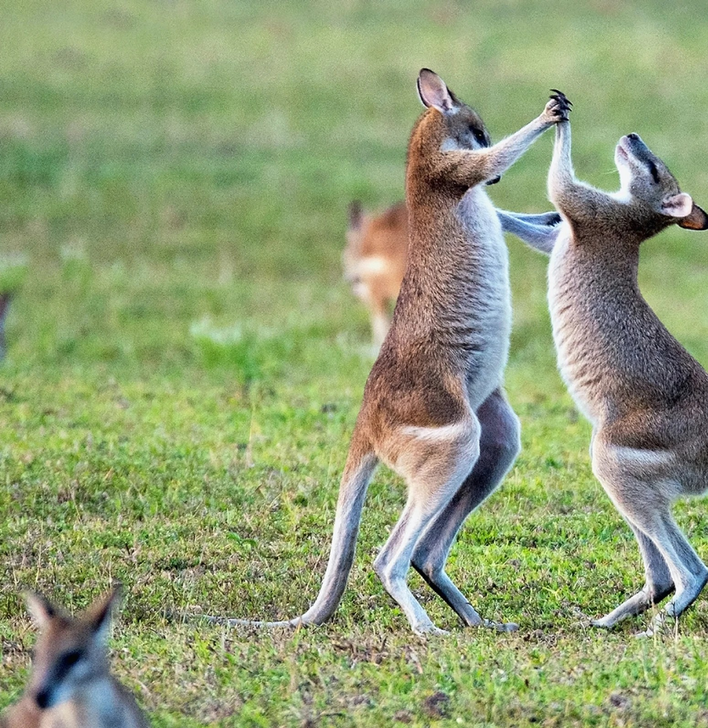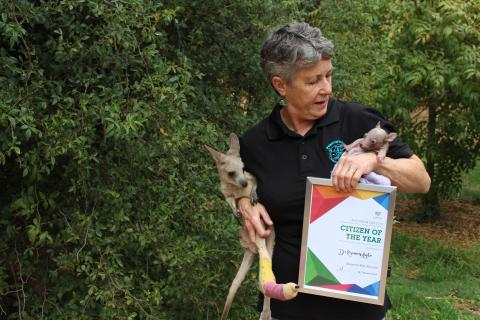- Apr 7, 2022
- 3 min read
Ill wind in Wamboin: What’s killing our young eastern grey kangaroos?
There has been a mystery illness killing the juvenile (last year’s joeys) Eastern Grey Kangaroos in the Wamboin /Bywong area over the last 2 months. The first cases we became aware of were rescues by experienced wildlife carers in the local area; Jo Walker, Tony and Terry Cooper and ourselves. The animals were so weak that the rescuers could often just walk up to them and wrap them in a blanket. Most would die within 12-24 hours despite treatment with warmth and security, fluids antibiotics and nutrition. Death was so rapid that it was difficult to arrange an examination of a live animal by a vet. The animals had lost weight and were very lethargic. Several had a systolic heart murmur and bradycardia (slow heart rate). The respiratory rate was slow and pattern abnormal. Some had opisthotonous (head arching backwards) and dilated slightly reactive pupils. The one animal who I was with at time of death had a respiratory arrest. Due to the severe weather we have been having in this area some juveniles were hypothermic (26-29 degrees). Some animals appeared to have more severe cardiac symptoms. In others the neurological symptoms predominated. We have had 14 animals either brought to us at the Possumwood Wildlife Recovery Centre or rescued by us and another four were still mobile and not able to be caught easily. There have been many reports by residents in this area of deaths of juvenile EG on their properties. All animals we have cared for have been placed in isolation at our wildlife recovery centre.
Dr Howard Ralph from Southern Cross Wildlife Care – the most experienced wildlife vet in Australia – did a post mortem on two animals, Rainbow and Moonbeam, on the 6th of August. Unfortunately Rainbow had died only a couple of hours before Howard was able to examine the animals. Moonbeam had died the night before. Rainbow had a large amount of fluid in the peritoneal cavity (ascites) and fluid around the heart and lungs (pericardial and pleural effusions). There also appeared to be pathology in the brain and meninges. There was food in the stomach and the poo in the bowel was pelleted and appeared normal. Urine dipstick was also normal. Rainbow had some worms (Strongyles ?) in the bowel but the numbers were not considered abnormal. There were similar findings for Moonbeam. The possibility that the deaths could be due to an encephalomyocarditis virus was considered. Unfortunately the tissue sample sent to the usual veterinary pathology laboratory for viral and bacterial culture was not able to be processed because we were told that private laboratories do not do viral cultures. The animal deaths were reported to the local Wildcare acting macropod coordinator and to Wildlife Health Australia. Tissue samples were taken and sent to Sydney University for histopathology.
We were called to rescue a juvenile (Moonshine) from Forest Road at 9 pm on Sunday night 16/8/2015. This little animal was very unwell. The kind staff at the local vet surgery at Bungendore arranged for little Moonshine to be examined by Dr Michael McCormack on Monday morning. As Moonshine was near death, the poor little creature was euthanased and immediate transport to the Elizabeth Macarthur Institute in Sydney was arranged. Dr McCormack’s findings were the same as what we have observed.
It is possible that if these deaths are due to an infectious disease then it is the immune system which is making these juveniles susceptible. We are not seeing more than the usual number of deaths in adults or in pouch joeys (who are protected by the mother’s immune system). Some locals have been concerned re poisoning of the animals but the widespread occurrence of the deaths and the selectivity for juveniles suggest that this is not the case.
This event brings to mind the saying – Today’s abundant species is tomorrow’s endangered species.



